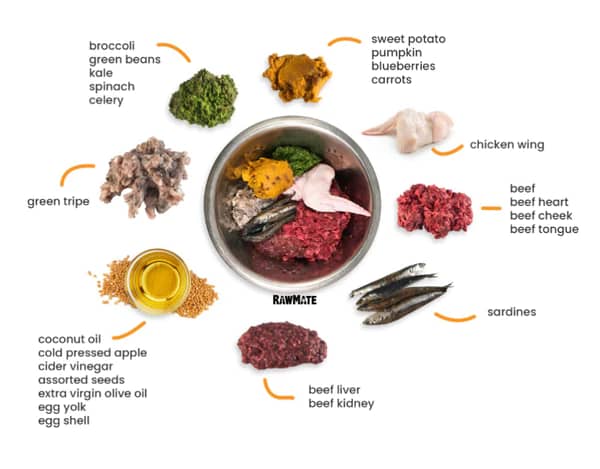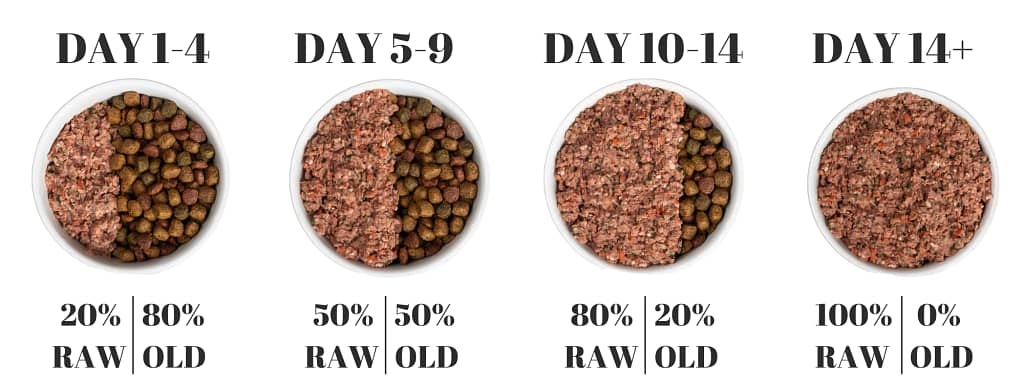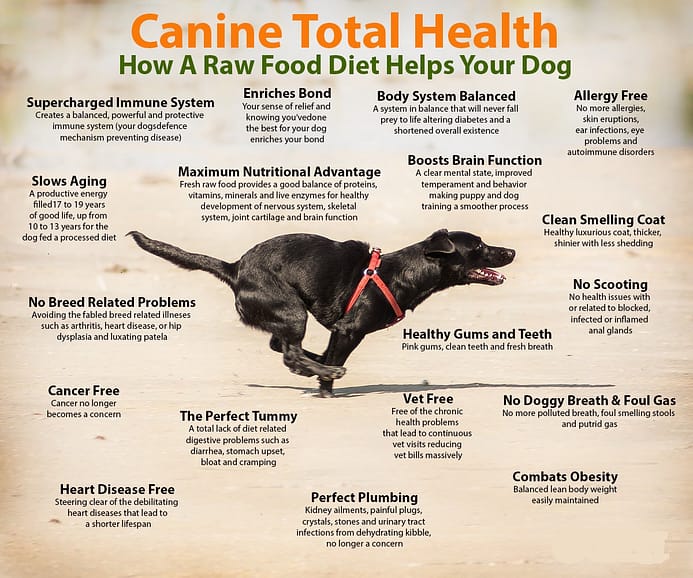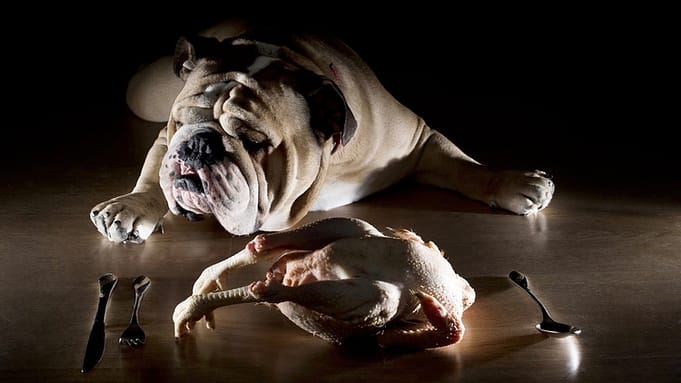Readers can make informed decisions about whether the dog raw diet is suitable for their furry companions.
Key Takeaways
- Raw feeding can improve dogs’ overall health and well-being.
- The raw diet may help manage allergies and food sensitivities in dogs.
- Proper handling and storage of raw food are crucial to minimize the risk of bacterial contamination.
- The raw diet should be tailored to meet the specific nutritional needs of individual dogs.
Benefits of a Raw Diet for Dogs
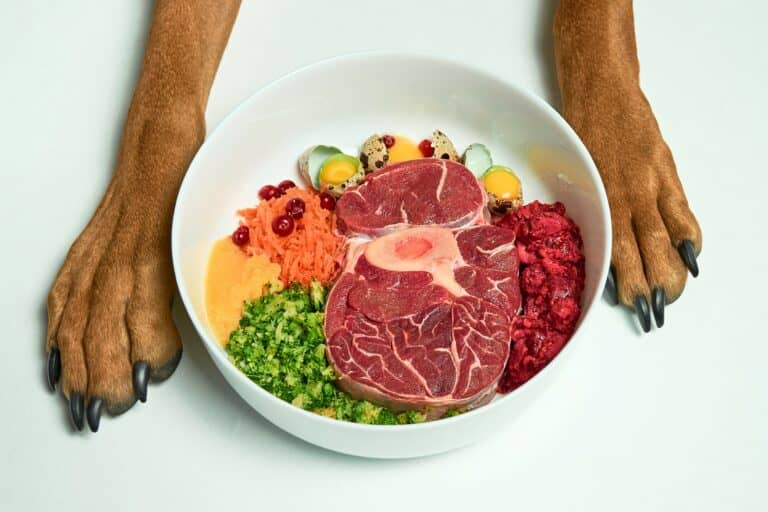
The potential benefits of a raw diet for dogs include improved digestion, healthier skin and coat, increased energy levels, and reduced risk of certain health conditions. Many dog owners are turning to raw diets as a way to provide their pets with optimal nutrition.
One major advantage of feeding dogs a raw diet is improved digestion. Raw food contains natural enzymes that aid in the breakdown and absorption of nutrients, leading to better digestive health. Additionally, a raw diet can promote healthier skin and coat in dogs. The high levels of essential fatty acids found in raw meat contribute to a shiny coat and can alleviate common skin issues such as dryness or itchiness.
Furthermore, dogs on a raw diet often experience increased energy levels. This is because the nutrients in raw food are more easily absorbed by the body compared to processed kibble. As a result, dogs have more fuel for physical activities and playfulness.
In terms of overall health advantages, feeding dogs a raw diet has been linked to reduced risk of certain health conditions such as obesity and dental problems. Raw diets typically consist of lean meats, vegetables, fruits, and bones which help maintain healthy weight management and support dental hygiene through natural chewing action.
The benefits associated with feeding dogs a raw diet are numerous. Improved digestion, healthier skin and coat, increased energy levels, and reduced risk of certain health conditions make it an attractive option for pet owners seeking optimal nutrition for their furry friends.
What Does a Raw Diet for Dogs Entail?
One must consider the nutritional composition and feeding practices involved in a canine’s natural, uncooked meal when transitioning to a raw diet for dogs. This type of diet aims to mimic what dogs would consume in the wild, which consists of raw meat, bones, organs, fruits, and vegetables. Here are some key aspects to consider during the transitioning process:
- Gradual transition: Switching abruptly from a commercial dog food diet to a raw diet can cause digestive issues. It is recommended to introduce raw food gradually over several weeks.
- Variety of protein sources: Dogs require a balanced intake of proteins from different animal sources such as beef, chicken, turkey, lamb, or fish. This ensures they receive all essential amino acids.
- Bones for dental health: Raw meaty bones are crucial for dental hygiene. Chewing on bones helps remove tartar and plaque buildup while exercising their jaw muscles.
- Organ meats for nutrients: Including organ meats like liver or kidney provides essential vitamins and minerals that may be lacking in muscle meat alone.
- Vegetables and fruits as supplements: Adding small amounts of finely chopped vegetables and fruits can provide additional vitamins, minerals, fiber, and antioxidants that contribute to overall health.
When following a raw diet for dogs, it is important to ensure that all nutritional requirements are met through proper planning and consultation with a veterinarian or canine nutritionist.
Transitioning to a Raw Diet
Transitioning to a raw food regimen involves gradually introducing uncooked ingredients that mimic the natural diet of canines, incorporating a diverse range of protein sources, bones for dental health, organ meats for essential nutrients, and fruits and vegetables as supplementary elements.
The transitioning process is crucial to ensure a smooth adjustment for dogs accustomed to processed commercial diets. It is recommended to make this transition over a period of two weeks or longer, gradually increasing the ratio of raw food in their meals while decreasing the amount of kibble or canned food.
Raw food preparation requires careful attention to hygiene and handling practices. It is important to source high-quality ingredients from reputable suppliers to minimize the risk of contamination. Raw meat should be handled separately from other foods and utensils must be thoroughly cleaned after use. Additionally, it is advised to freeze raw meat for at least three days before feeding it to dogs in order to reduce the risk of parasites.
Transitioning to a raw diet involves a gradual shift from processed commercial diets to uncooked ingredients that closely resemble what dogs would eat in the wild. The process requires careful planning and preparation, ensuring proper hygiene and handling practices are followed during raw food preparation.
By following these guidelines, dog owners can provide their pets with a nutritionally balanced diet that supports their overall health and well-being.
Tips for Feeding a Raw Diet
When implementing a raw food regimen, it is important to introduce a variety of protein sources, incorporate bones for dental health, include organ meats for essential nutrients, and incorporate fruits and vegetables as supplementary elements.
Transitioning to a raw diet can be challenging for both dogs and their owners. However, with the right tips and strategies, the process can be smooth and successful. One important tip when transitioning to a raw diet is to do it gradually. Start by replacing a small portion of your dog’s current food with raw food and gradually increase the ratio over time. This allows your dog’s digestive system to adjust slowly.
Another tip is to source high-quality ingredients for your dog’s raw diet. Look for grass-fed or pasture-raised meats that are free from antibiotics and hormones. It is also important to choose organic fruits and vegetables whenever possible.
To ensure proper balance of nutrients in your dog’s diet, it is recommended to consult with a veterinary nutritionist or holistic veterinarian who specializes in raw feeding. They can provide guidance on portion sizes, supplements if needed, and address any concerns you may have during the transition.
Common Concerns and FAQs about the Dog Raw Diet
A crucial aspect of implementing a raw food regimen for canines is addressing common concerns and frequently asked questions surrounding this feeding approach. One of the main concerns dog owners have when considering a raw diet for their pets is the fear of bacteria and parasites.
However, it is important to note that dogs have a shorter digestive tract compared to humans, which allows them to handle raw meat more efficiently. Additionally, by following proper handling and hygiene practices, such as washing hands thoroughly after handling raw meat and ensuring that all surfaces are cleaned properly, the risk of bacterial contamination can be minimized.
Another misconception about the dog raw diet is that it may lead to nutritional imbalances. While it is true that a poorly formulated raw diet lacking in essential nutrients can be detrimental to a dog’s health, it is equally important to recognize that a properly balanced raw diet can provide all the necessary nutrients for optimal canine health.
To ensure nutritional adequacy, dog owners should consult with a veterinarian or animal nutritionist who specializes in raw feeding and can help create a well-balanced meal plan.
See Also:
- Dog Food Advisor: Knowledge Powerhouse for Optimal Canine Nutrition
- Acana Dog Food
- Purina Gentle Snackers: Irresistible Treats for Sensitive Dogs
Conclusion
In conclusion, the dog raw diet offers numerous benefits for our canine companions. By providing them with a natural and species-appropriate diet, we can enhance their overall health and well-being.
Addressing common concerns and misconceptions surrounding the dog raw diet is vital for its successful implementation. By understanding proper handling techniques and seeking professional guidance on formulating balanced meals, dog owners can confidently provide their pets with the many benefits associated with a raw food regimen while minimizing potential risks.
Transitioning to a raw diet may require some patience and guidance, but it is worth the effort. Remember to follow proper feeding guidelines and address any concerns or questions that may arise.
Like a symphony conductor guiding each instrument to play in harmony, a raw diet orchestrates optimal health for our furry friends.
Make a Lifelong Connection—Explore bonevoyagedogrescue.com and Find Your Furry Soulmate!
Frequently Asked Questions
Can I feed my dog a raw diet if they have a sensitive stomach or food allergies?
Feeding a raw diet to dogs with sensitive stomachs or food allergies can be beneficial. Raw diets provide natural, unprocessed ingredients that may alleviate digestive issues and reduce allergic reactions in some dogs.
What are the potential risks and benefits of feeding a raw diet to my dog?
Potential risks of feeding a raw diet to dogs include bacterial contamination, nutrient imbalances, and the potential for bone splintering. However, there are potential benefits such as improved dental health and coat condition.
Is it necessary to add supplements to a raw diet to ensure my dog is getting all the necessary nutrients?
Supplement necessity is dependent on nutrient balance. Studies show that 76% of raw diets are deficient in multiple nutrients, making supplementation important to ensure dogs receive all necessary nutrients for optimal health.
Are there any specific guidelines or recommendations for portion sizes when feeding a raw diet to my dog?
Portion sizes for a raw diet can vary depending on factors such as the dog’s size, activity level, and health condition. It is important to gradually transition to a raw diet for dogs to avoid digestive issues.
Can I still feed my dog a raw diet if they have dental issues or missing teeth?
A raw diet for dogs with dental issues or missing teeth can still be feasible. Softening or grinding the food, incorporating boneless meats, and providing appropriate supplements can help ensure proper nutrition and ease of consumption.

